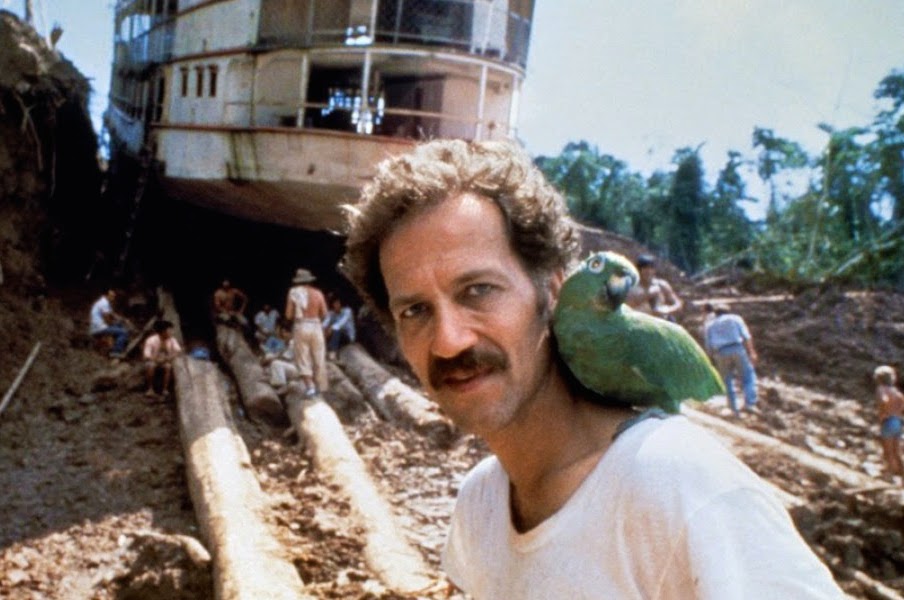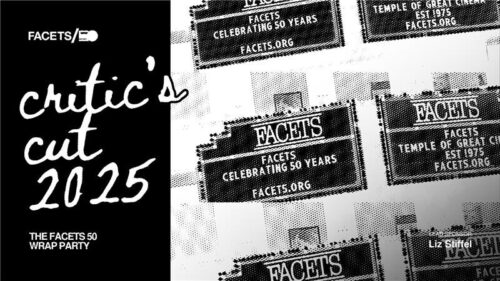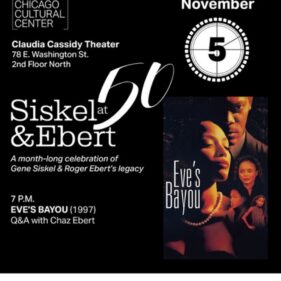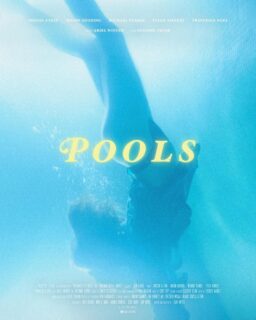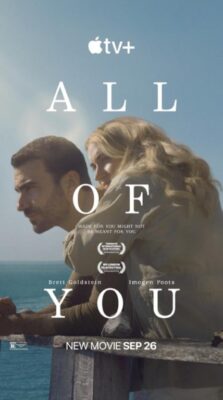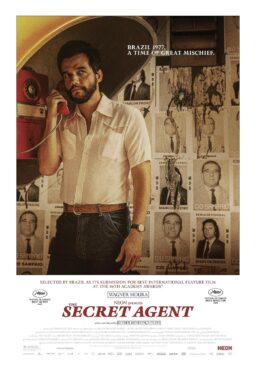We will continue to highlight filmmakers and actors that Roger championed throughout his career. Click here for a full table of contents for our “Roger’s Favorites” entries. Below is an entry on filmmaker Werner Herzog, who will be honored at the Guggenheim Symposium at the AFI DOCS film festival in Washington D.C. on Friday, June 24th. Herzog will also be offering an online master class in filmmaking this summer (click here for more info).
In a blog post written in 2008, Roger acknowledged how his site contained a great deal of articles about the revered German filmmaker, Werner Herzog. “In my mind there can never be too much,” he admitted. “He and a few other directors keep the movies vibrating for me. Not every movie needs to vibrate, but unless a few do, the thrill is gone.” Roger often included Herzog’s 1972 classic, “Aguirre, the Wrath of God,” on his list of the ten greatest films ever made. In his original four-star review of the film, Roger hailed Herzog as “the most austere of the new German directors, the one most concerned with characters trapped at the extremes of alienation and madness.” He dubbed it “an obsessive film, about obsession” in which “Herzog finds images to make the river journey an almost physical reality for us.” When Roger started his Great Movies series, “Aguirre” was one of the first titles he inducted, calling it “one of the great haunting visions of the cinema.” In 2010, Roger viewed the film one shot at a time with Herzog and Ramin Bahrani at the Conference of World Affairs in Boulder, Colorado. The experience was so profound, it caused Roger to ponder whether he had really ever seen the film at all.
Of course, “Aguirre” is just one highlight in a career that is loaded with them. In his Great Movies essay on Herzog’s 1974 picture, “The Enigma of Kaspar Hauser,” Roger explored the filmmaker’s ability to “find extraordinary individuals who embody the qualities” that he wants to evoke. Rather than depending on acting in the conventional sense, Herzog “is most content when he finds an actor who embodies the essence of a character, and he studies that essence with a fascinated intensity.” His Great Movies essay on “Heart of Glass” (1976) is particularly chilling, as the film causes Roger to reflect on the seemingly dire fate of our planet. “Some images are complete without translation into words,” Roger wrote. “‘Heart of Glass’ strikes me as a film of such images. From it I get a feeling that evokes my gloom as I see a world sinking into self-destruction, and feel I am lucky to be old because there may not be another lifetime’s length of happiness left for most people on this planet. For most of my time here there was still rose-colored glass.” One continuously senses that Herzog’s work had a spiritual impact on Roger as well as an intellectual one.
Another of Roger’s favorite Herzog films, “Stroszek” (1977), received a Great Movies essay as well, in which the critic called it “one of the oddest films ever made.” He recalls a story from the film’s DVD commentary in which Herzog ended up personally shooting the picture’s infamous footage of a dancing chicken, since his crew members refused to film it themselves. “The chicken is a ‘great metaphor,’ he says—for what, he’s not sure,” Roger wrote. “My theory: A force we cannot comprehend puts some money in the slot, and we dance until the money runs out.” Roger also greatly admired Herzog’s approach to adapting the iconic story of “Nosferatu the Vampyre” in 1979. He considered it “the most evocative series of images centered around the idea of the vampire that I have ever seen” since F.W. Murnau’s “Nosferatu” (1922). “English permits ‘vampire movies’—but a ‘nosferatu movie?’” Roger wrote in his four-star review. “Say ‘vampire’ and your lips must grin. The other word looks like sucking lemons. Perfect. There is nothing pleasant about Herzog’s vampire.” In his Great Movies essay on “Nosferatu,” Roger affirmed that the film couldn’t be confined to the horror genre. “It is about dread itself, and how easily the unwary can fall into evil,” Roger wrote.

At the Telluride Film Festival in 1981, Roger was immensely disturbed by footage from a documentary-in-progress directed by Les Blank about the latest film from Herzog, which looked like a “suicide mission.” The film was to be called “Fitzcarraldo.” “If Herzog survives and ‘Fitzcarraldo’ is finished, the production will be one of the most extraordinary achievements in the history of movies—regardless of the quality of the film,” Roger predicted. Sure enough, when the film was released the following year, Roger awarded it four stars, declaring it “a movie in the great tradition of grandiose cinematic visions.” Though he admitted that “Fitzcarraldo” was flawed and meandering, it still was a film he “wouldn’t have missed for the world.” He expanded on these thoughts in his Great Movies essay on the film, in which he called it “imperfect but transcendent. This story could not have been filmed on this location in this way and been perfect without being less of a film.” For the record, Roger also gave Blank’s 1982 documentary, “Burden of Dreams,” four stars as well, hailing it “one of the most remarkable documentaries ever made about the making of a movie.”
One of the most intriguing aspects about Herzog’s work is how his documentaries often appear to be more staged than his narrative features. In his three-star review of the documentary, “Where the Green Ants Dream” (1984), Roger discussed the strangeness of how nothing in the movie was “based on anthropological fact. The beliefs, customs, and behavior of the Aborigines, for example, are not inspired by research into their actual lives—but are a fiction, made up by Herzog for his screenplay.” He also reflected on Herzog’s belief in the “‘voodoo of locations,’ in the possibility that if he shoots a movie in the right place and at the right time, the reality of the location itself will seep into the film and make it more real.” This was certainly true of “Fitzcarraldo,” and in a 1984 interview with Herzog, Roger told the director, “I keep thinking that someday I will have to write your obituary. […] You seem to seek out danger almost deliberately.” Herzog replied, “I am not seeking danger. I am just seeking my stories.”
Herzog’s curious approach to documentaries was analyzed even further in Roger’s three-and-a-half-star review of “Little Dieter Needs to Fly” (1998). “Herzog sees his mission as a filmmaker not to turn himself into a recording machine, but to be a collaborator,” Roger wrote. “He does not simply stand and watch, but arranges and adjusts and subtly enhances, so that the film takes the materials of Dengler’s adventure and fashions it into a new thing. […] It takes art to transform someone else’s experience into our own.” During an interview at Telluride that same year, Herzog said, “The weakness of cinema verite documentaries is that they can never go any deeper. They can only reach the surface of what constitutes truth in cinema. Deeper truth can only be found in poetry, because then you start to fabricate. The world is simply there. It is what men find in it and bring to it that is truth. I am in search of the fathomless.” At the beginning of the article, Roger observed that “there is no such thing as a casual conversation with Werner Herzog. When I run into him at a film festival my heart quickens, because I know I am going to be told amazing things, all delivered with the intense air that we are sharing occult knowledge.”
Even when Roger wasn’t over the moon about a particular Herzog film, he always found elements in them that were worth cherishing. In his three-star review of the documentary “My Best Fiend” (2000), Roger said the film “suffers a little by not having footage to cover more of Herzog’s sharpest memories,” yet “as a meditation by a director on an actor, it is unique.” Roger gave the same star rating to “The White Diamond” (2005), which he said earned “its place among the other treasures and curiosities in Herzog’s work.” And for 2010’s “My Son, My Son, What Have Ye Done,” Roger wrote one of his most gleeful three-star reviews, calling it “a splendid example of a movie not on autopilot. I bore my readers by complaining about how bored I am by formula movies that recycle the same moronic elements. Now here is a film where Udo Kier‘s eyeglasses are snatched from his pocket by an ostrich, has them yanked from the ostrich’s throat by a farmhand, gets them back all covered with ostrich mucus, and tells the ostrich, ‘Don’t you do that again!’”

When Roger loved a Herzog film, he felt compelled to share it with the world. At the 2004 installment of Ebertfest (then called Roger’s Overlooked Film Festival), Roger invited Herzog for a screening of his 2002 drama, “Invincible,” and a lightly edited transcript of their marvelous onstage conversation is available to read here. “There are countless movies about preludes to the Holocaust, but I can’t think of one this innocent, direct and unblinking,” Roger wrote in his four-star review of “Invincible.” “[It] was a singular experience for me, because it reminded me of the fundamental power that the cinema had for us when we were children. The film exercises the power that fable has for the believing. Herzog has gotten outside the constraints and conventions of ordinary narrative, and addresses us where our credulity keeps its secrets.” Roger also loved Herzog’s 2005 documentary, “Grizzly Man,” which he said was “unlike any nature documentary I’ve seen.” The film centered on Timothy Treadwell, a bear enthusiast who ironically did not tread well (or smartly) among his favorite species. “I have a certain admiration for [Treadwell’s] courage, recklessness, idealism, whatever you want to call it, but here is a man who managed to get himself and his girlfriend eaten, and you know what? He deserves Werner Herzog,” wrote Roger in his four-star review.
When Herzog remade his own documentary, “Little Dieter Needs to Fly,” as a narrative drama, “Rescue Dawn,” in 2007, Roger was struck by how the film was “perhaps the most believable that Herzog has made. For a director who gravitates toward the extremes of human behavior, this film involves extreme behavior, yes, but behavior forced by the circumstances.” Roger gave the film the same star rating he bestowed upon “Little Dieter” (three-and-a-half), and admired how “Herzog makes no attempt to pump this story up into a thrilling adventure. There is nothing thrilling about dysentery, starvation, insect bites and despair.” When Roger discovered that Herzog had dedicated his latest documentary, “Encounters at the End of the World,” to him upon its debut at the 2007 Toronto Film Festival, the critic wrote Herzog a letter that beautifully encapsulated what the filmmaker had meant to him over the years. Herzog, Roger wrote, is “a man whose life and career have embodied a vision of the cinema that challenges moviegoers to ask themselves questions not only about films but about lives. About their lives, and the lives of the people in your films, and your own life.” When the film was released the following year, Roger gave it four stars, and said that it was clear how much the director loved his human subjects in the film, since they, like Herzog, “have gone to such lengths to escape the mundane and test the limits of the extraordinary.”
In one of their last conversations, Herzog told Roger about his unslakable curiosity regarding the human condition. “As you would understand the very nature of physical matter by putting it under extreme temperature, pressure, or radiation, similarly human beings would reveal their nature under extreme conditions,” Herzog said. “The Greeks have a proverbial saying I always liked: ‘A captain only shows during a storm.’” A year after their chat, Herzog made one of his funniest movies, “Bad Lieutenant: Port of Call New Orleans” (2009), which earned four stars from Roger. He declared that Herzog and his star, Nicolas Cage, were “born to work together” since they are “both made restless by caution.” To Roger, the film was “not about plot, but about seasoning. Like New Orleans cuisine, it finds that you can put almost anything in a pot if you add the right spices and peppers and simmer it long enough.” When Herzog experimented with 3-D in his next documentary, “Cave of Forgotten Dreams” (2011), Roger noted in his three-and-a-half-star review how the director used “3-D as a way for us to enter the film’s space, instead of a way for it to enter ours.” Later that year, Herzog released the last film Roger would review before his death in 2013. It was “Into the Abyss,” a film about a man on Death Row, and Roger wrote in his four-star review that it “may be the saddest film Werner Herzog has ever made.” The last line of Roger’s review would end up being quoted in the film’s trailer: “In some of his films [Herzog] freely shares his philosophy and insights. In this film, he simply looks. He always seems to know where to look.”
